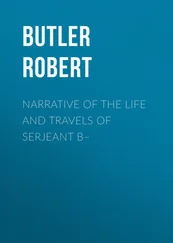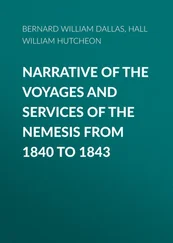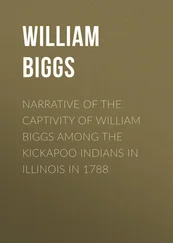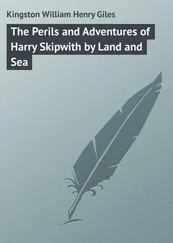John Tanner - A narrative of the captivity and adventures of John Tanner
Здесь есть возможность читать онлайн «John Tanner - A narrative of the captivity and adventures of John Tanner» весь текст электронной книги совершенно бесплатно (целиком полную версию без сокращений). В некоторых случаях можно слушать аудио, скачать через торрент в формате fb2 и присутствует краткое содержание. Жанр: Путешествия и география, на английском языке. Описание произведения, (предисловие) а так же отзывы посетителей доступны на портале библиотеки ЛибКат.
- Название:A narrative of the captivity and adventures of John Tanner
- Автор:
- Жанр:
- Год:неизвестен
- ISBN:нет данных
- Рейтинг книги:4 / 5. Голосов: 1
-
Избранное:Добавить в избранное
- Отзывы:
-
Ваша оценка:
- 80
- 1
- 2
- 3
- 4
- 5
A narrative of the captivity and adventures of John Tanner: краткое содержание, описание и аннотация
Предлагаем к чтению аннотацию, описание, краткое содержание или предисловие (зависит от того, что написал сам автор книги «A narrative of the captivity and adventures of John Tanner»). Если вы не нашли необходимую информацию о книге — напишите в комментариях, мы постараемся отыскать её.
A narrative of the captivity and adventures of John Tanner — читать онлайн бесплатно полную книгу (весь текст) целиком
Ниже представлен текст книги, разбитый по страницам. Система сохранения места последней прочитанной страницы, позволяет с удобством читать онлайн бесплатно книгу «A narrative of the captivity and adventures of John Tanner», без необходимости каждый раз заново искать на чём Вы остановились. Поставьте закладку, и сможете в любой момент перейти на страницу, на которой закончили чтение.
Интервал:
Закладка:
*
Sug-gus-swaw-waw – the Smoker, in Ojibbeway.
*
Pe-twaw-we-ninne. – This, however, is a Cree word; the name among the Ojibbeways, is Sug-guo-swaw-we-ninne. Muskegoe is from Mus-keek, a swamp, and is applied to a band of the Ojibbeways, enjoying in general no very good name.
*
This word, Win-ne-peg, is derived from win-ne-be-a, “ dirty water,” or ween-au-gum-ma, which has nearly the same meaning. The lake is called by the Indians Win-ne-be-a Sau-gie-gun, “ Dirty Water Lake.”
*
Assinneboins, Stone Roasters, from using heated stones to boil their provisions.
*
Puk-kwi, the cat-tail flag, (Typha Latifolia,) of which we made the coarse mats called by the Menomonies (O-pah-keuk, by the Ojibbeways of the Upper Mississippi, O-pah-kwi-wuk. There is a lake on the route from Green Bay to the Wisconsan, called on the maps Puckaway, but the word is, in the country, pronounced Puk-kwi.
*
Gah-menomonie gah-wun-zhe-gaw-wie see-bee, (the river of the wild rice straw.) Gaw-wun-je, or Gaw-wunzk, is applicable to the stalks or trunks of many plants, shrubs, etc. as Mee-na-gaw-wunge, (whortleberry bush,) or, in the plural, Mee-na-gaw-wa-cheen, (whortleberry bushes.)
*
Lakes of the largest class are called by the Ottawwaws, Kitchegawme; of these they reckon five; one which they commonly call Ojibbeway Kitchegawme, Lake Superior, two Ottawwaw Kitchegawme, Huron and Michigan, and Erie and Ontario. Lake Winnipeg, and the countless lakes in the north-west, they call Sahkiegunnun.
*
Nebeninnah-ne-sebee – High Craneberry River; since called Pembinah. The Indian name is derived from that of the viburnum, with large red edible berries, somewhat resembling the craneberry; thence called v.oxycoccus. “Red River” is from the Indian Miskwawgummewesebee.
*
Pronounced by the Indians, We-ge-wham.
*
A-gutch-a-ninne-wug, the settled people, called by the white Minnetarees.
*
Jebiug-neezh-o-shin-naut – Two dead lie there.
*
From tub-buz-zeen, imperative, “Do thou dodge down.”
*
Naw-we-sah-ki-e-gun.
*
An-nim-me-keeg wus-re-tah goos-e-wuk, (Ottawwaw,) it thunders. – na-mah-ke-wuk kau-ke-to-wuk, (Menomine,) it thunders. – they are both, however, plural nominations, and have verbs in the plural.
*
The name of this distinguished chief is spelt in “Major Long’s Second Expedition,” Wa-no-tan. To an English reader, this orthography conveys as incorrect an idea of the sound of his name, as the engraved portrait in that work, does of his handsome face and person.
*
The name of this man Tanner pronounces Gish-gau-go. He has subsequently been well known in Michigan, and other portions of the north-western frontier, by his numerous murders and depredations. He died in prison at Detroit, as lately as the fall of 1825.
*
Or Spit Roasters, so called from their roasting meats on wooden spits.
*
This is one of the species of Psoralea, so abundant in the open countries of the Missouri. When boiled or roasted, the roots are exceedingly palatable and nutritious; but the exclusive use of them commonly occasions derangement of the bowels.
*
Muz-zin-ne-neen, muz-zin-ne-neen-sug – singular and plural. Meshe-nin-ne-shah, Meshe-nin-ne-shuk – Menomonie dialect. These little images, or drawings, for they are called by the same names, whether of carved wood, or rags, or only rudely sketched on birch bark, or even traced in sand, are much in use among several, and probably all the Algonkin tribes. Their use is not confined to hunting, but extends to the making of love, and the gratification of hatred, revenge, and all malignant passions.
It is a prevailing belief, to which the influence of established superstition has given an astonishing power, that the necromancers, men and women of medicine, or those who are acquainted with the hidden powers of theirwusks, can, by practising upon the Muz-zin-ne-neence, exercise an unlimited control over the body and mind of the person represented. As it may have been, in former times, among the people of our race, many a simple Indian girl gives to some crafty old squaw her most valued ornaments, or whatever property she may possess, to purchase from her the love of the man she is most anxious to please. The old woman, in a case of this kind, commonly makes up a little image of stained wood and rags, to which she gives the name of the person whose inclinations she is expected to control; and to the heart, the eyes, or to some other part of this, she, from time to time, applies her medicine, or professes to have done so, as she may find necessary to dupe and encourage her credulous employer.
But the influence of these images and conjurations, is more frequently tested in cases of an opposite character; where the inciting cause is not love, but hatred, and the object to be attained, the gratification of a deadly revenge. In cases of this kind, the practices are similar to those above mentioned, only different medicines are used. Sometimes the Muz-zin-ne-neence is pricked with a pin, or needle, in various parts, and pain or disease is supposed to be produced in the corresponding part of the person practiced upon. Sometimes they blacken the hands and mouth of the image, and the effect expected,is the change which marks the near approach of death.
In the sanguinary chapter of the Calica Puran, we find reference to a similar superstition among the Asiatics.
“Let a figure be made, either of barley meal or earth, representing the person with whom the sacrificer is at variance, and the head of the figure struck off. After the usual texts have been used, the following is to be used in invoking the axe on the occasion: Effuse, effuse blood! be terrific, be terrific! seize, seize! destroy, for the love of Ambica, the head of this enemy. Having struck off the head let him present it, using the texts laid down hereafter for the occasion, concluding with the word PHAT. Water must be sprinkled on the meal or earthen victim, which represents the sacrificer’s enemy, using the text commencing with Racta draibaih, (i. e. by streams of blood,) and marks must be made on the forehead with red sanders; garlands of red flowers must be put round the neck of the image, and it must be dressed in red garments, tied with red cords, and girt with a red girdle. Then placing the head towards the north, let it be struck off with an axe, using the Scanda text.”
So general and prevalent, among the Indians, is the confidence in the efficacy of these charms, and of those practised by means of a hair from the head of the intended victim, that the belief in them has extended to many of the more ignorant of the Canadians who reside with the Indians, and even to some of the traders. Instances in which a hair is used in place of the image, or mus-zin-ne-neence, are frequently those of young women; and various, and sometimes dreadful, are the consequences supposed to result. So confident are the representations of whites, and those even of some shrewdness, and so strong the belief of the Indians, in the power of these drawings, as to enforce the conviction that effects have been produced in connection with these mummeries, either by the influence of imagination, or the still more powerful and certain operation of poison, administered secretly. Poisoning is a crime of perhaps greater frequency among the Indians than could have been expected from their situation; and they attribute equal guilt to the poisoner, whether he actually and craftily administers some powerful drug, or whether, at the distance of one or two hundred miles, or at any place, however remote, he so applies medicine to the Muz-zin-ne-neence, or to a hair, as to produce pain, sickness, death, or other suffering, in his enemy. The influence of these superstitions and absurd fears is boundless, and would, perhaps, surpass comprehension and belief if we could not look back to the time when the minds of our own race were similarly enthralled, and when the dread of supernatural powers in the hands of the malicious or the envious, formed one among the most serious and real evils in the life even of the most enlightened and independent. Many cases of sudden sickness occur among them, and many deaths happen entirely in the way of nature, which they, being ignorant of the true cause, attributeto poison, or more frequently to bad medicine; but enough of well authenticated instatnces exist to prove that they, in some cases, practice upon each other by poison; sometimes using such noxious plants, or other substances as their own country affords, and in other instances procuring arsenic, or other drugs, from the whites. To destroy life in this way is perfectly in accordance with their ideas of bravery, or toughness of heart, (Soug-ge-da-win;) he being often esteemed the bravest man who destroys his enemy with least risk to his own life.
Читать дальшеИнтервал:
Закладка:
Похожие книги на «A narrative of the captivity and adventures of John Tanner»
Представляем Вашему вниманию похожие книги на «A narrative of the captivity and adventures of John Tanner» списком для выбора. Мы отобрали схожую по названию и смыслу литературу в надежде предоставить читателям больше вариантов отыскать новые, интересные, ещё непрочитанные произведения.
Обсуждение, отзывы о книге «A narrative of the captivity and adventures of John Tanner» и просто собственные мнения читателей. Оставьте ваши комментарии, напишите, что Вы думаете о произведении, его смысле или главных героях. Укажите что конкретно понравилось, а что нет, и почему Вы так считаете.










